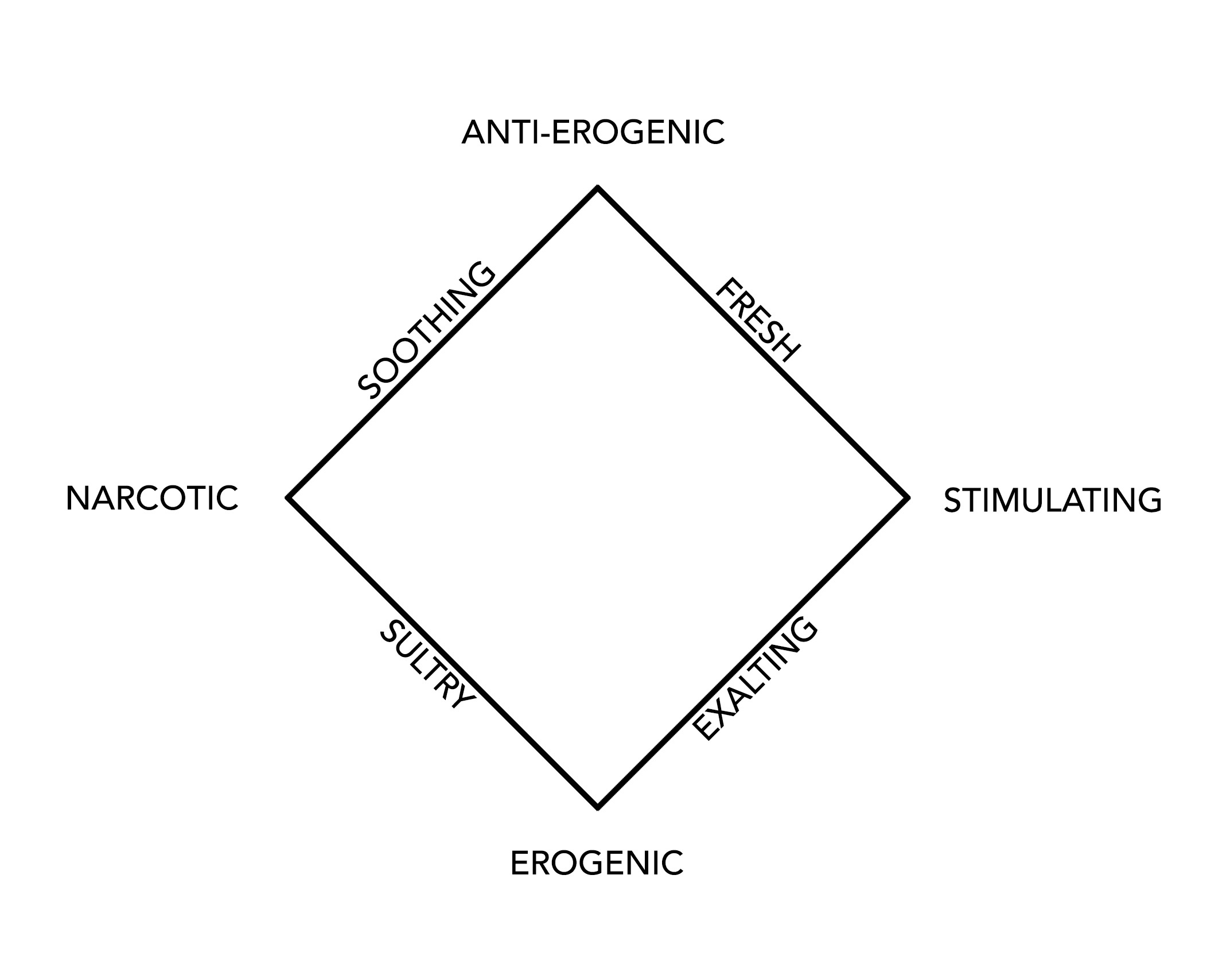While The Practice of Modern Perfumery offers a number of formulas, it’s the incidental stuff I find most exciting.
Author Dr. Paul Jellinek categorizes aromas into four groups:
- Animal (fatty; waxy; sweaty; putrid)
- Flowers and balsams
- Terpenes and camphors (menthol-like; resinous; green)
- Vegetable materials excluding flowers (roots, seeds, branches, and leaves; characterized as resinous, green, or acidic. Spices are also considered stimulating)
He discusses how each of these groups affects us and arranges them in a diamond showing how they interrelate.
In the classic French tradition, perfumers use aromatic substances from all the main groups, each represented at a point on the diamond. Anti-erogenic compounds, at the top of the chart are known as fresh, minty, piney, or calming like eucalyptus. These compounds are the main ingredients in eaux de cologne. Erogenic compounds, at the bottom of the chart, are funky animal things like ambergris, civet and musk. They are aphrodisiacs and pheremonic. These two contrasting groups are often used together, with the anti-erogenic compounds balancing and disguising the erogenic aromas, which seem disgusting to us if too strong.
Contrasts also occur between narcotic and stimulating compounds. Narcotic ingredients are usually flowers, but various balsams and balsamic compounds also fit this description. These ingredients dull the senses and create a general sense of relaxation. Stimulating compounds include spices, burnt smells, roots (such as orris), seeds (such as angelica), leaves (such as cinnamon), and branches (such as petitgrain).
Between each of these main odor categories are sub-categories with their own odor effects. Honey-like odors, for example, fall between the erogenic and the narcotic. These aromas are characterized as sultry. Fruity smells are both anti-erogenic and narcotic. These are referred to as soothing. Minty odors have both a narcotic and stimulating effect. Smells that we describe as “powdery” (dusty, choking), are between stimulating and erogenic. They are considered exaltants, ingredients that enhance and bring others to the fore.
It’s quite an amazing book and I’m certainly not done writing about it….
